- Data Basin |
- Datasets |
- California Black Oak Habitat Suitability (Baseline), Golden Gate Biosphere Network
California Black Oak Habitat Suitability (Baseline), Golden Gate Biosphere Network
Sep 17, 2023
Uploaded by
Conservation Biology Institute
- Description:
- This ensemble model of habitat suitability for California Black Oak (Quercus kelloggii) across the California Floristic Province was generated with the flexSDM R package (Velazco et al. 2022) from 6 individual presence-absence species distribution modeling algorithms (generalized additive (GAM), generalized boosted regression (BRT), generalized linear (GLM), neural networks (ANN), random forest (RF), and support vector machine (SVM)). This ensemble model was created from all models with an area under the receiver operating characteristic (AUC) >= 0.7 using the weighted average method and the true skill statistic (TSS) performance metric.This habitat suitability model used 3247 presence and 4231 absence points collected between 1980 and 2023 from multiple sources, cleaned for accuracy and quality, and filtered to 1-km minimum nearest neighbor distance. The model calibration extent was limited to a 5-km buffer of the known species range within the California Floristic Province. The model has a spatial resolution of 270m and is based on historical (1921-2050) climate conditions and 15 predictors: summer precipitation, summer maximum temperature, winter minimum temperature, actual evapotranspiration, annual runoff, southwest index, solar insolation index, topographic wetness index, terrain ruggedness, soil thickness, soil pH, soil available water capacity, soil percent clay, soil percent sand, and soil porosity.
Model performance was evaluated with both threshold-independent and threshold dependent metrics, and the model-specific threshold maximizing the sum of sensitivity and specificity was used for calculating threshold-dependent model evaluation metrics. This model had an AUC of 0.87, sensitivity of 0.84, specificity of 0.78, TSS of 0.63, Jaccard index of 0.66, and Sorensen similarity index of 0.80.
Values below the maximum sum of sensitivity and specificity threshold (0.4212) were assigned a value of 0. A land cover mask was used in post processing to convert the suitability value of high intensity development, barren, cultivated crops, and open water (NLCD 2021) land covers to 0 and the output was clipped to the Golden Gate Biosphere Network terrestrial boundary.
- Data Provided By:
- Conservation Biology Institute
- Content date:
- not specified
- Spatial Resolution:
- 270 (Meter)
- Contact Organization:
- Conservation Biology Institute
- Contact Person(s):
- Use Constraints:
 This work is licensed under a Creative Commons Attribution 3.0 License.
This work is licensed under a Creative Commons Attribution 3.0 License.
- Layer:
- Layer Type:
- Currently Visible Layer:
- All Layer Options:
- Layers in this dataset are based on combinations of the following options. You may choose from these options to select a specific layer on the map page.
- Description:
- Spatial Resolution:
- Credits:
- Citation:
- Purpose:
- Methods:
- References:
- Other Information:
- Time Period:
- Layer Accuracy:
- Attribute Accuracy:
FGDC Standard Metadata XML
Click here to see the full FGDC XML file that was created in Data Basin for this layer.
Original Metadata XML
Click here to see the full XML file that was originally uploaded with this layer.
This dataset is visible to everyone
- Dataset Type:
-
Layer Package
Bookmarked by
1 Group
Included in
1 Public Gallery
About the Uploader
Conservation Biology Institute
We provide advanced conservation science, technology, and planning to empower our partners in solving the world’s critical ecological challenges


 Heather Rustigian-Romsos
Heather Rustigian-Romsos
